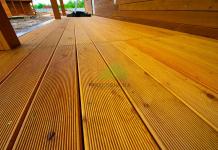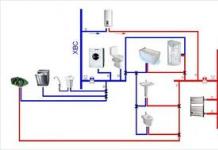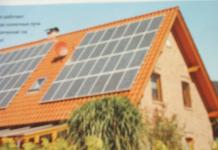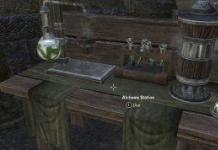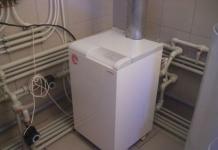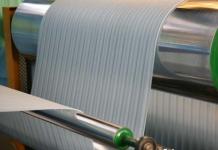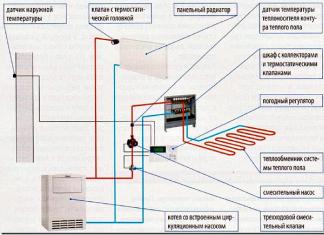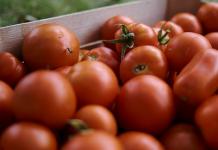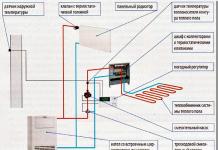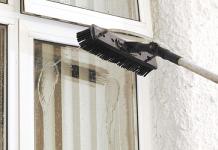To decorate their backyard, many owners use juniper. This plant of the Cypress family impresses with a variety of shapes and colors of needles. You can create a carpet from creeping varieties, make a hedge using shrub species or tree forms to highlight the central part of the lawn. Its beneficial effect on human health has been known since ancient times. Therefore, the propagation of juniper is an urgent task for many gardeners.
Juniper Cossack variety "Blue Danub"
Most plant species easily tolerate the realities of Russian climatic conditions. Juniper is not picky about care, it easily tolerates dry periods. Despite the fact that this plant loves the sun's rays, it can also grow in shady spaces.
In our country, the following types are most common:
- virginian juniper, which came to us from the North American continent;
- rocky, can grow up to 10 meters high;
- juniper horizontal will wrap any area with a carpet, its variety Cossack juniper allows reproduction by all known methods;
- medium juniper is resistant to environmental influences, originated from a combination of Cossack and Chinese;
- common juniper has creeping and tree-like forms.
Plant breeding

juniper seed
The easiest way to propagate juniper seeds, but a characteristic feature of the plant is the fact that the first shoots may appear no earlier than a year after planting. Germination is improved by seed stratification. Sowing them before winter or artificially creating conditions of high humidity and temperature. For the first time this method was applied by R. Silva, described in 1664 in the work “Conversation about forest trees and their reproduction for logging”. Some varieties can be in the ground without the appearance of sprouts up to 4 years, and the appearance of fruits will be pushed back by another 10 years.

In the photo, the fruit and seeds of juniper
Propagation of juniper seeds
The general methodology boils down to the following steps:
- Collection of fruits. Pick the darkest berries. In light - there are immature seeds.
- After soaking, rubbing, seeds are extracted from the fruits.
- For half an hour, the seeds are placed in a weak acid solution, then washed. If there is time, it is permissible to mix the seeds with ash, grind and hold for 3 weeks.
- Soil preparation consists in mixing the main soil with the soil from under the adult juniper. There are symbiont mushrooms that help the plant grow.
- When planting in open ground, mulching with humus or peat is required.
- Seeds can be planted in a box, but then the dishes are taken out of the room and covered with snow.
- In the spring, a plant that begins to germinate, it is advisable to insulate.
Seedlings can be transplanted to a permanent place at the age of three. An older plant may not survive the transplant.
When possessing especially valuable plant varieties, reproduction occurs by grafting. In this case, the cut off part is pressed against the rootstock - this is the carrier of a new plant; for these purposes, common juniper is most often used. Part of the plant is combined with the rootstock, a plastic film is applied at the junction. In the future, no action should be taken, but survival is at a low level.
Juniper seeds propagate in the wild, it is quite difficult to increase the number of plants by grafting, therefore, at home, propagation methods by cuttings or layering are the most productive.
Reproduction of juniper cuttings
If juniper propagation is planned in the spring, then the cuttings must be cut at the beginning of February. With standing breeding plans in the autumn, harvesting is done in early June. Since in the cypress family, juniper in particular, the roots will appear no earlier than after 25 days, and the plant will take as much as 2 months to root.

juniper cuttings
Juniper cuttings are one of the most versatile methods of plant breeding. In the autumn and summer, this is not worth doing. The best time for juniper cuttings is spring. Then, at the end of summer, a root system is formed, a young plant will easily overwinter in open ground. If the procedure is carried out in the summer, it is necessary to keep the plant until the spring of next year in a heated place, in extreme cases, it must be well covered.
The instruction is quite simple:
- Material for planting is taken from the tops of a tree or bush. He must be unaffected. If it is planned to breed creeping varieties, then a cut is made from plants that grow vertically.
- So that neither the cut stalk nor the carrier is affected, the work must be done when there is no sun: either at night, or when it is cloudy.
- Shoots are cut, up to 25 centimeters in length, with a sharp knife. They remove the bark and branches below to a height of 4 cm, since the root system will form here. You can’t store them, a maximum of cut branches can be put in water for 2 to 3 hours.
- In advance, it is necessary to prepare the mixture for planting. It consists of peat and humus mixed in equal proportions.
- Before planting, a drainage layer is made of sand or small stones.
- The distance between plants is about one meter.
- The depth of the cuttings should not exceed 2 - 3 centimeters.
- If propagation is done for creeping varieties, then the shoots are planted horizontally, in other cases, planting is done in an upright position.
- At the landing site, direct sunlight is unacceptable, only diffused light is needed.
- Watering is average, if the seedlings are waterlogged, they may die, it is better to spray them often.
In late summer, early autumn, plants can be planted in open ground.
Before planting, it is not recommended to use plant growth stimulants; peeling of the bark is possible, which will negatively affect the rooting process. It is better, after soaking in the soil for several days, to water it with heteroauxin or sodium humate, but you should not overdo it. Potash fertilizers cannot be used either, juniper prefers an alkaline environment.
When planting in a permanent place, 3 months after planting in seedling boxes, care must be taken, because the newly formed root system has a delicate structure, the best solution to let the plants overwinter in greenhouse conditions can simply be transferred to a house or apartment.
Propagation of juniper branches

Propagation of juniper Cossack branches
If the plant variety is creeping - it can be a Cossack juniper green carpet, a blue chip, then the method of propagation by branches is acceptable. The procedure is carried out throughout the growing season.
The instruction is as follows:
- Before cutting the branch, it is necessary to water the mother plant abundantly. Loosen the soil.
- The soil is being prepared, it is necessary to mix peat with humus in equal proportions, add river sand to it.
- The youngest shoots are cut off no more than 25 centimeters long.
- The heel is exposed by four cm.
- The bare stem is pressed against the prepared soil, it is necessary to fix it with a wire or synthetic tape.
- The attached branch must be mulched with peat or humus.
Constant care is required for a young plant - this is watering and hilling, when a root system appears, it is possible to transplant to a permanent place, but it will appear only within one year.
Video "Reproduction of juniper cuttings"
Care for young seedlings
Caring for a newly planted plant is quite simple. Every spring it is necessary to fertilize the soil with nitroammophos, but the consumption should not exceed 50 grams per square meter. No other fertilizers are required. It is not necessary to feed the juniper more than once a month. It is better to spray it more often during sunset or dawn, in bright sunlight this should not be done. There is no need to prune the plant; in extreme cases, you can remove branches that have dried up or broken.
Juniper prefers acidic soil and can thrive in sandy soils. The older the plant, the higher its resistance to the cold of the middle zone of our country.
Even the laziest person will be able to grow and care for the plant, as it is completely unpretentious. But you need to stock up on remarkable patience, because the results of juniper reproduction can only be seen in a few years. But it will turn out to be an excellent decoration for the backyard.
A fast and productive way to propagate juniper and other members of the Cypress family is cuttings. Cutting young branches with subsequent rooting indoors can be done year-round, even in harsh February.
Obtaining ready-made seedlings with strong roots is calculated according to the timing: if planting material is needed for spring planting at the planned growing sites, then the collection of juniper branches (cuttings) and rooting is carried out in January-February. By the autumn laying of the plantation, respectively - in early summer. Coniferous species form roots for a long time, on average they appear on the 25th day of the juniper, so you should not rush with rooting time. The cuttings of coniferous species are an order of magnitude heavier and more voluminous than currant or grape "blanks", so they are cut no longer than 25 cm, and creeping juniper varieties are rooted obliquely.
It is desirable to harvest branches in the upper and middle parts of the bush, while simultaneously forming a crown and thinning out a thickened plant. Having collected the cuttings, the lower planting part is carefully rid of the needles with a clerical knife, trying not to damage the bark. It is better not to soak prepared shoots in root formation stimulants, since the tender juniper bark quickly exfoliates in water and the overall productivity of the workpieces is lost. It is more expedient to first plant the cuttings in the substrate and then, shed all the plantings with heteroauxin, sodium humate or the Zircon preparation, which will significantly increase the rate of root formation and the survival rate of twigs.
 Juniper requires an acidic structure of the soil substrate, and if one is not available in home stocks, then needles cut from the bases of cuttings, river sand are added to ordinary soil and an increased dose of mineral top dressing is added.
Juniper requires an acidic structure of the soil substrate, and if one is not available in home stocks, then needles cut from the bases of cuttings, river sand are added to ordinary soil and an increased dose of mineral top dressing is added.
Place containers with plantings strictly under diffused daylight, otherwise the branches will burn out and die if you put them on sunny windows. Watering a rooted plantation is done rarely, keeping in mind the intolerance of excess moisture by conifers. If possible, planting containers are fed with water through pallets to prevent moisture stagnation and superficially irrigate juniper cuttings from a spray bottle.
In the spring, rooted seedlings are transferred to an open, non-sunny area under a light frame greenhouse made of non-woven material, and the autumn removal is placed in a pit and the planting is mulched with a layer of wood chips, mixed with peat and pine bark. At the spring planted planting material, the greenhouse is dismantled in August and the formed young juniper is placed on their planned plots. Autumn seedlings from the dig after wintering are transferred to permanent habitats in the first decade of summer.
Juniper Cossack - reproduction
Recently, many amateur gardeners, in addition to fruit and berry crops, have also planted ornamental plants on their plots, as they say "for the soul and to please the eye." Among them, a special place is given to coniferous evergreen trees and shrubs. In terms of unpretentiousness and frost resistance, Cossack juniper is the most popular among gardeners. But the trouble is, seedlings of these crops cost a lot of money. Okay, if you plant one plant, and if you want to plant a hedge of conifers. In this case, you can try to grow seedlings on your own. Juniper Cossack is a dioecious plant. The male flower looks like an oval catkin with numerous stamens: the female flowers are collected in an inflorescence. Cones are small, spherical, no more than 7 mm in diameter, brown-black in color with a bluish coating, drooping. Seeds ripen twice a season - in the fall and spring of the following year. Each cone contains no more than 4 seeds. Be careful, they are poisonous and Cossack juniper cannot be used for medical purposes.
Reproduction by seeds
The most difficult and lengthy breeding option for Cossack juniper is by seeds. From the resulting juniper fruits - cones, you can get seeds for sowing, for this you need to remove the seeds from the fruit and wash them, for quick germination they can be immersed in a solution of sulfuric acid for 10 minutes. To grow a juniper bush from a seed, it is necessary to stratify it. The best way is the autumn sowing of seeds in boxes with earth. Then natural stratification - the boxes are taken out into the street and stored under snow for 4-5 months during the winter, and already in April, the overwintered seeds are sown in the beds.
There are several methods for propagating juniper plants at home. For this purpose, seeds, cuttings are used, new specimens are obtained from the branch and layering. But not all of these methods are equally effective and allow you to quickly get young plants. Each method has its advantages and disadvantages, and also requires compliance with the necessary conditions for successful breeding of juniper.
Popular types of junipers
In modern landscape design, juniper is very popular. Juniper plants are distinguished by a variety of shapes, color, plasticity and unpretentiousness. They are suitable for the implementation of the ideas of designers, as they perfectly tolerate a haircut. Depending on the species, juniper can take the form of a sprawling tree, a lush bush, or creep along the ground. Several types are the most popular.
Juniper Cossack is found in nature in the wooded part of the European territory and in many parts of Asia. Usually plants of this species are winter-hardy creeping shrubs. They are undemanding to the composition of the soil, love the light and perfectly tolerate the lack of moisture. Thanks to these qualities, their parts are used to strengthen the slopes.

Creeping juniper is also called horizontal. In nature, plants of this species live in North America. This ground cover plant is used as a decoration for retaining walls and slopes.

Varieties of common juniper are distinguished by their endurance and ability to adapt to adverse conditions. They tolerate frost, lack of light and water well. These plants are highly decorative, and their slow development is an advantage for solving some design problems, for example, such varieties are suitable for growing bonsai.

Juniper rocky in nature lives in North America. These plants have an attractive conical shape, thanks to which they have gained popularity in landscape design. They are used for landscaping parks and squares, as well as for creating hedges.

Growing from seed
Reproduction of juniper from seeds is a complex process. Even in natural conditions, this method is rare. Plants appear only a few years after the seeds enter the soil, and fruiting is possible after 10 years.
In practice, such propagation of juniper is practically not used due to the length and difficulty of the process and low germination.
At home, in order to successfully grow a plant in this way, the seed material is first stratified, that is, subjected to cold treatment. To do this, from autumn they need to be sown in boxes with soil and stored under snow until spring (at least 4 months). Then, if the seed coat is very dense, which happens with some types of juniper, it must be scarified to speed up germination, that is, mechanically damaged or treated with acid. The easiest way to do this is to take two boards covered with sandpaper and rub the material between them.

In May, the prepared seeds are sown on the beds, planting to a depth of 2–3 cm. Then they are mulched and watered as needed. After the emergence of seedlings, they are covered from the sun for the first 2 weeks. Be sure to loosen the soil and weed out the weeds. When the seedlings reach the age of three, they can be dug up along with a clod of earth and planted in a permanent place.

Reproduction by cuttings
At home, cuttings are most often used to propagate juniper plants. They take root better, successfully acclimatize and develop faster.
The most successful time for grafting is in the spring, in which case strong roots will form in the seedlings by the end of summer. In autumn, young plants can be placed in open ground, arranging a small shelter for wintering. If cuttings are made in the summer, then the root system will not have time to get stronger. In this case, in winter, the plants should be at home or in the country house indoors.
For successful reproduction, perform the following steps:
- 1. Cuttings are harvested in cloudy or rainy weather. To do this, take branches 10–15 cm long and separate them with a sharp knife along with a piece of trunk wood.
- 2. All needles and branches are removed from them to a height of 3–4 cm from the cut point. Prepared cuttings can be immediately planted in the ground. If this cannot be done, then for some time they are able to stand in a jar of water, but not more than 3 hours.
- 3. To root the cuttings, they are planted in tall boxes with drainage holes, filled with a mixture of peat and humus in equal parts. A drainage layer is laid at the bottom, and sand (3–4 cm) is poured over the soil. The cuttings are deepened by 3 cm at an angle of 60 degrees, keeping a distance of at least 7 cm between them.
- 4. The boxes are positioned so that they are illuminated by diffused sunlight. Juniper does not like too high humidity, so watering is rarely done. Top dressing during this period is also not needed.
- 5. When planting in the ground in a permanent place, the cuttings are treated with growth stimulants. If the creeping juniper breeds, then it is placed horizontally, all other varieties - vertically.
Juniper is a bright representative of the coniferous community, it can decorate any garden with itself and therefore enjoys special respect among landscape designers. This plant has a huge variety of forms, from creeping to columnar, its needles have shades from bluish-green to golden. It grows slowly, retains its shape well, perfectly strengthens the soil, especially on the slopes, is a long-lived plant: in nature there are specimens that are up to three thousand years old! On average, the life of a juniper is 500 - 600 years. The plant is thermophilic, light-loving, drought-resistant, does not tolerate stagnant moisture.
Due to the variety of species that differ both in height, shape, and shade of color, juniper can be used as a hedge, to decorate paths, rockeries and borders, tapeworms in flower beds and lawns, large dark spots on the far background of the garden. In addition, junipers have healing, and primarily bactericidal, properties, and this allows them not only to decorate gardens and parks, but also to perform an important health-improving function.
In nature, junipers reproduce very poorly by seeds, since seeds require a long (up to six months) stratification, young seedlings grow very slowly. Only in the tenth year of life they give the first fruits. Artificial breeding of juniper from seeds is unproductive, therefore, most often they resort to its reproduction by rooting cuttings. Rooted cuttings give faster growth, they can be used much earlier than seedlings in decorative gardening. Although the percentage of rooting depends on the plant variety (some take root worse), but, nevertheless, it remains quite high.
You can root juniper cuttings from early spring to late autumn, but April and May are considered the best time for this - the time of the most active growth and development of the plant. For rooting, it is best to use semi-lignified shoots from old branches from the middle part of the plant. Cuttings taken from young branches take much longer to root and have a much lower percentage of rooting. A very important point in the propagation of juniper: cuttings taken from the ends of the side branches will continue to continue the life of the “side branch”, that is, strive to grow in breadth, and not up. If it is required to obtain planting material for columnar forms, then it is necessary to choose cuttings located closer to the central trunk, which tend to grow vertically. It is best to cut the cuttings with a sharp garden knife along with a “heel” - a small thickening at the point where the cutting is attached to the main branch. Do not be upset if you failed to cut the cutting with a "heel", such cuttings also have a good chance of giving roots. Harvested cuttings must be freed from twigs and needles to a height of 3 - 4 cm from the base - this section of the stem is just to form the future root system. Before planting, it would be good to treat the cuttings with some kind of root formation stimulator, for example, heteroauxin, root. You can hold the cuttings for a day in a weak sugar solution before planting.
The soil for rooting cuttings should be loose, breathable. You can use a mixture of peat and sand in equal parts. It is important to remember that conifers love acidic soil, so lime, ash, crushed eggshells and other soil deoxidizers should not be added to the juniper substrate. It is best to root juniper cuttings in a dry, warm greenhouse, or in a ridge covered with a film. But, if conditions do not allow, rooting can also be done in an ordinary flower pot. Using a pencil or stick, you need to make holes in the soil 3–4 cm deep at a distance of 5–8 cm from each other, then insert the prepared juniper cuttings into these holes, compact the soil around them, pour well and cover with a film. If direct sunlight falls on the greenhouse, then it is necessary to build shading. Juniper vitally needs a large amount of light, but during the period of rooting of the cuttings, the direct sun can become fatal for them. If the cuttings take root in a pot or bowl, then put a plastic bag on top of the pot, and then install the pot on a window with diffused lighting. Watering the cuttings should no longer be until they are fully rooted.
If you have the opportunity to devote a lot of time to your seedlings, then it is better to root juniper cuttings without using a covering film, because under the film the plants grow weaker and less hardened than in the open air. When rooting cuttings without a film, they need to be sprayed 5-6 times a day from a water sprayer to maintain optimal air humidity. Since the open ground will evaporate a lot of moisture, the cuttings will need small waterings as the soil dries. But, in no case should the soil be too wet, because junipers cannot tolerate excess water.
The first roots of the cuttings will appear 50-70 days after planting. seedlings immediately after rooting are not worth it, since the roots are still very tender and thin and can be easily injured during transplantation. Therefore, if possible, it is best to leave rooted cuttings in place until next year to allow the root system to grow and become stronger. If this is not possible, then the transplantation of rooted cuttings should be done very carefully, with the help of small tools, taking out the seedlings together with a clod of earth and placing them in prepared holes in a permanent place with it.
A few more words should be said about the rooting of creeping varieties of juniper. Here the situation is somewhat simpler: pin enough branches for rooting to the ground and cover with a small amount of soil from above, freeing the rooting site from small branches. During the growing season, the sprinkled section of the branch will give roots and, after separation of the branch from the mother plant, it will become an independent plant.



